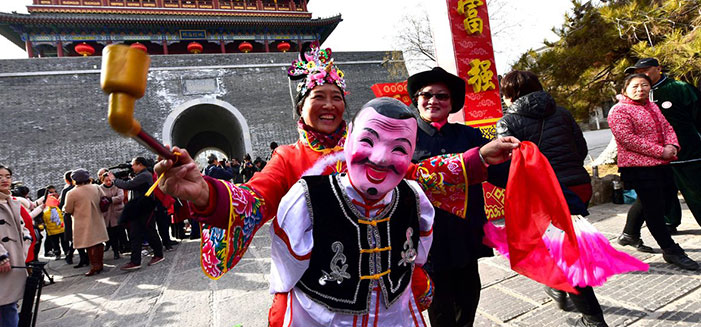There are many great festivities that take place around the world. Throughout Asia in particular, there are celebrations that take place weeks at a time. While in America, New Year’s Eve is typically a single celebration on a single evening to mark the coming year, Chinese New Year is a larger celebration. Almost everyone knows that the Chinese New Year is a grandiose celebration that spans at least two weeks. Shippers are more than likely familiar with the effects of the celebration spanning a month. In any case, there are plenty of festivities around the time of Chinese New Year that take place in many countries, not just China, in spite of the name.
What is the Chinese New Year?
Chinese New Year is a popular festival that marks the beginning of the new year. It starts on the second new moon following the winter solstice and it lasts for 15 days. During this time people visit their family and friends, cook special meals, enjoy firework displays, and give gifts. While many people understand that Chinese New Year takes place sometime around January or February depending on the year, however, it may be surprising to learn that the Lunar New Year takes place concurrently.
Which Countries Celebrate the Lunar New Year?
Few people are familiar with the term Lunar New Year. The Lunar New Year has its own set of traditions and celebrations occur outside of China. Places like Singapore, Vietnam, Korea, and other Asian countries celebrate the Lunar New Year which starts on the First new moon of the lunar calendar and ends after the first full moon approximately 15 days later.
Differences in Each Country’s Celebrations
These two celebrations, though different and celebrated in different countries, typically align because of the way that nations read the lunar calendar. For example, in Vietnam, the celebration starts with a feast that takes place at the same time as the feast for South Korea, but South Korea celebrates the Lunar New Year that runs only three days in length rather than 15. The Vietnamese celebrate the feast on the first morning of the first day, called Tết Nguyên Đán. In South Korea, the term Seollal is used for the Lunar New Year, which refers to Eumnyeok Seollal, 음력 설날.
Tibet celebrates the Tibetan New Year which is also referred to as the Losar Festival. Tibet integrates certain Chinese calendar holidays into their culture which is why the Tibetan New Year lasts 15 days, similar to that of the Chinese New Year. Still, cultural practices and food practices are different. Losar, for example, is not always on the same calendar dates as the Chinese New Year but it does typically overlap.

Similar Celebrations that Differ in Traditional Ways
There are many similar celebrations that differ in traditional ways. Depending on the animal for the year in question, different Asian countries might add something special to the New Year based upon that animal or based upon the cycle of the moon.
During Chinese New Year, families typically reunite for a large family dinner. As part of this dinner, there are many dishes, including steamed fish, which are traditionally consumed. Steamed fish is usually seen because the Chinese word for surplus and profit sound very similar to the word, fish. Therefore, thinking is that consuming fish will bring about wealth in the coming year. It is customary throughout Asian countries to exchange red envelopes, inside of which is usually money. Family members typically bestow these upon their younger relatives, adults give them to their children, and married couples give them to unwed family members. It is also customary for bosses to present their employees with a small gift. In multiple countries, there are beautiful firecrackers and fireworks displays. The firecrackers are typically made from strings of rolled-up red paper, when they explode they leave Scarlet paper everywhere. The firecrackers are made to expel a loud noise when set off, to scare away any evil spirits. Places like Hong Kong and Shanghai display some of the most impressive presentations of fireworks at the mark of the new year.
In certain countries, you will see the lion and dragon dances. These are very colorful traditional dances that bring about good luck. Sometimes they take place in the form of street parades and feature drums and cymbals. Many times the dragon dances feature a large group of dancers, while the lion dances are only performed by one or two dancers. In many countries that celebrate the Lunar New Year or the Chinese New Year, it’s customary for families to clean their homes intensely, scrubbing windows, sweeping floors, and dusting furniture. Doing all of this before the new year sweeps away any bad luck from the previous year.
Wrapping Up
There are so many great traditions that take place in every country around the world, and they serve historical importance. It is equally important to understand the variety that exists and to identify where these traditions cross paths. If you are interested in learning about other exciting celebrations, and how they impact business operations or shipping throughout the year, dig into other cultures and discover the vast nature of their history.



